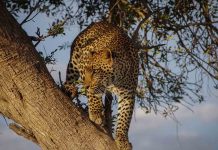Today is the fifth anniversary of the killing of Cecil the lion, lured out of a protected area in Zimbabwe, shot with a bow and arrow and then finally killed with a gunshot after hours in agony.
Despite lions being listed as ‘vulnerable’ on the International Union for the Conservation of Nature (IUCN) Red List of Threatened Species, South Africa still permits the hunting and export of lion trophies. Fewer than 20 000 lions remain in the wild today. Lions exist in only 8% of their former range thanks to habitat loss and trophy hunting.
An Economists at Large report commissioned by Humane Society International (HSI) found that trophy hunting does not economically benefit local communities. Its financial contribution is at most at 0.03% of the gross domestic product in the eight African countries studied – Botswana, Ethiopia, Mozambique, Namibia, South Africa, Tanzania, Zambia and Zimbabwe.
A recently published paper confirmed that the captive lion industry contributed a negligible amount to South Africa’s tourism revenue while impairing the country’s reputation and brand image. This paper suggested that continuing to support the captive predator breeding industry, would put wild lion conservation at risk if demand for parts continues to grow in Asian and other markets.’

HSI-Africa Wildlife Director, Audrey Delsink says: “With fewer than 20,000 wild lions left today, it is difficult to comprehend that lions are the 5th most commonly imported trophy-hunted species in European Union member states. HSI’s analysis of CITES data reveals that South Africa exported 343 lion trophies within a year, of which, 312 were from captive lion breeding facilities.
A scientific study reveals that the captive predator breeding industry contributed only 0.96% of South Africa’s total tourism GDP contribution in 2019. With the species in peril, and the captive lion industry standing to cause irreparable damage to South Africa’s brand, the majestic lion could soon disappear from our landscape. If we lose lions, we also risk losing the photographic eco-tourists whose dream it is to see these magnificent big cats in the wild and whose tourist dollars make a significant contribution to our country’s economy.”
Captive lion hunt facilities allow hunters to shoot lions in a fenced area from which they have no hope of escape. While there is pressure globally to ban the import of lion trophies, it has been banned in France and the Netherlands since 2015 and 2016 respectively.




